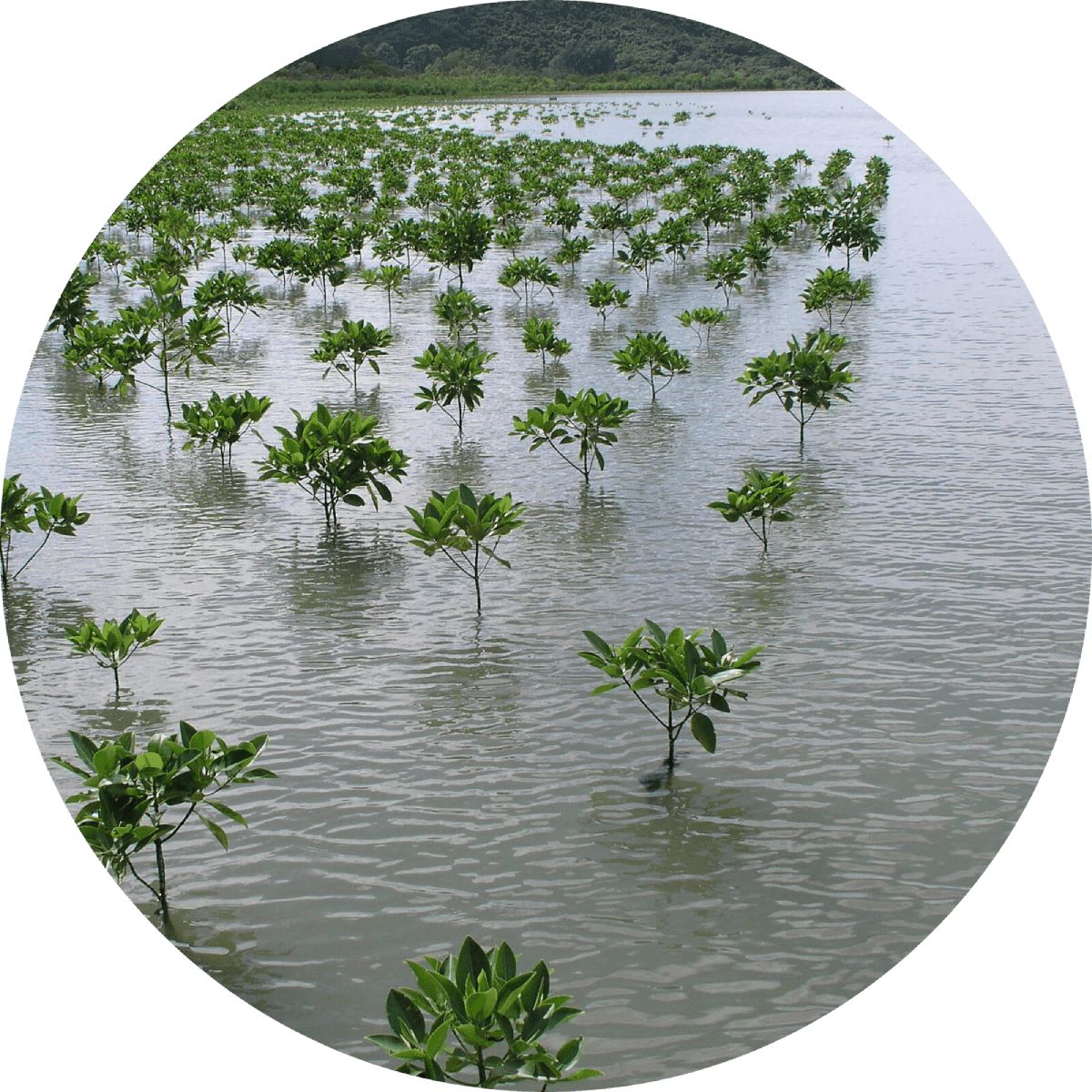"On the surface, the future of the Chesapeake Bay appears about as murky and dark as deep water . . . Human activities in the six-state watershed from mining to farming, from home construction to heavy industry, from road construction to sewage treatment spew pollution into the water . . . Scientists also know the cure . . . environmentally sensitive land use practices that preserve green space and protect streams and rivers . . . Projects like storm water upgrades, sewage system overhauls, or matching dollars that encourage farmers to plant cover crops, or leave unplanted buffer strips around waterways, use fewer pesticides or invest in a greener system of dealing with animal manure, could make a big difference . . . preserving clean drinking water in rural communities is easier if cattle are kept away from streams. In cities like Baltimore, improving how storm water is handled can prevent basement flooding. And if suburban developers want to continue to ply their trade, they ought to support projects that reduce harmful runoff — like keeping more permeable surfaces or ponds so water has time to filter down in the ground, planting more trees and preserving open space... There are other competing uses for those billions of federal dollars . . . but none more important than preserving the health of the Chesapeake Bay and the humans who depend on clean water."
". . . nitrogen and phosphorus pollution that heavy rains wash into rivers and the Bay acts as fertilizer, causing the algae to grow explosively in warm, still water bathed in sunlight. When algae die, the decomposition process takes nearly all the oxygen out of the water, creating dead zones where fish, crabs, and oysters can't survive . . . Climate change is creating better conditions for algal blooms by increasing both temperatures and rainfall."
"This is proof that restoration projects that aim to improve water quality are also powerful tools to fight climate change . . . Water quality actions in Virginia’s WIP [watershed implementation plan] . . . could produce more than two million tons of climate mitigation co-benefits while also improving soil health and the resilience of Virginia farms to climate change . . . [In 2019] practices that included the establishment of trees and shrubs removed 188,833 tons of carbon dioxide equivalent on 41,646 acres of farmland, with the greatest amount of carbon sequestered in silvopasture, a conservation practice that increases tree canopy coverage . . . provides shade for livestock, increases climate resiliency, reduces erosion, improves water quality, enhances wildlife habitat, and improves soil quality."
"Virginia’s Tangier Island is rapidly disappearing. Rising sea levels are exacerbating erosion and flooding, and could make the speck of land in the Chesapeake Bay uninhabitable within the next few decades . . . By analyzing aerial photographs of the area from 1967 to 2019, [researchers] found that nearly 62 percent of the ridges have been lost to sea level rise. What’s left will convert completely to a wetland by 2051 — about a decade earlier than previously thought."
“The [Patuxent] river is a mess, sick with pollution . . . We can hardly imagine the clarity of the water and the bounty of life that it sustained when Algonquin-speaking Native Americans lived here . . . We have been poor stewards of the land.”
"When it comes to the Chesapeake Bay, the majestic bald eagle has come back from the dead. Driven from historic nesting strongholds like the James River by pesticides in the 1970s, the national bird has become a success story. Today, they’ve swelled to numbers . . . well above what even Capt. John Smith encountered on the cusp of the 17th century."
"For the first time in the 33 years that scientists have assessed the health of the Chesapeake Bay, the nation’s largest estuary showed improvement in every region . . . the bay’s most important species [blue crabs and striped bass] earned top scores in a report card . . . Bright green underwater grasses — which help protect young fish before they venture into the Atlantic Ocean — are now thriving, even in some places where such vegetation had disappeared."
"Osprey populations are thriving almost everywhere in the Chesapeake . . . We found them nesting in some of the most highly contaminated areas in the bay, and we did not find any relationship between contaminants and their nests’ productivity.”
“The Chesapeake Bay marked a major milestone in 2015 with the completion of the world’s largest oyster restoration project at Maryland’s Harris Creek . . . At 350 acres, the Harris Creek reef is bigger than the National Mall and was seeded with more than 2 billion oysters. These oysters were bred at the University of Maryland's Horn Point Hatchery, where they were selected for their resistance to dermo (Perkinsus marinus) and MSX (Haplosporidium nelson), two diseases that have decimated oyster populations over the last 60 years."
"I grew up in Newport News, Virginia, in a home on the James River near the mouth of the Chesapeake Bay . . . [A]s I became a teenager, the river changed. The water grew persistently muddy, making it impossible to see crabs and fish beneath the surface. Sandy beaches eroded away to rock and clay. The grass beds full of life disappeared. Tar balls and litter washed ashore. And the wintertime flocks of ducks thinned to just a few birds. The James River seemed to be fading with my youth, and while I had no clue why, I distinctly remember wishing it wasn't so but feeling helpless to stop it . . . Fast-forward 25 years . . . I learned about nitrogen, phosphorus, and sediment pollution, about excess fertilizer and manure, about wastewater, about sprawl development and urban runoff, about lost wetlands and forests, and about cloudy water and dead zones . . . And then it hit me. What was killing the Chesapeake Bay was the same thing that was killing the James River: too much pollution."
"My life has revolved around the pursuit of fish. Living in Maryland has given me opportunities to do so. But, over the years the lack of clean water, fish, and forage has affected the fishing tremendously. I've had to pursue fish in other states . . . The fishing has declined, and I'm beginning to see less fish every day. Growing up I used to see schools of bunker being blitzed on by stripers. It was hard not to see a school of baitfish roaming around. But now it's all but ghost waters. These bunker schools don't appear—if you're lucky you can see a few swim by. If you're lucky."
“The Bay is improving. Slowly. But it is improving. The great news: Water quality indicator scores have improved significantly. What we can control – pollution entering our waterways – is moving in the right direction. The worrisome news: blue crabs and striped bass are not doing well. These metrics indicate a system still dangerously out of balance."
"The Atlantic sturgeon survived the Ice Age but is now threatened with extinction. Despite a more than decade-old ban on fishing for the sturgeon, a host of other threats – including ongoing catch in other fisheries, habitat damage, pollution and the growing effects of climate change – have proved too challenging for the species to recover. By recognizing the fish's endangered status, the federal government is giving this remarkable fish a fighting chance to live on into the 21st century."
The EPA establishes the Chesapeake Bay Total Maximum Daily Load (TMDL): "a historic and comprehensive “pollution diet” . . . to restore clean water in the Chesapeake Bay and the region’s streams, creeks and rivers."


Learn about Maya Lin’s fifth and final memorial: a multi-platform science based artwork that presents an ecological history of our world - past, present, and future.

Discover ecological histories and stories of former abundance, loss, and recovery on the map of memory.

Learn how we can reduce our emissions and protect and restore species and habitats – around the world.

See how art can help us rethink the problems we face, and give us hope that each one of us can make a difference.

Help make a global memorial something personal and close to home. Share your stories of the natural world.